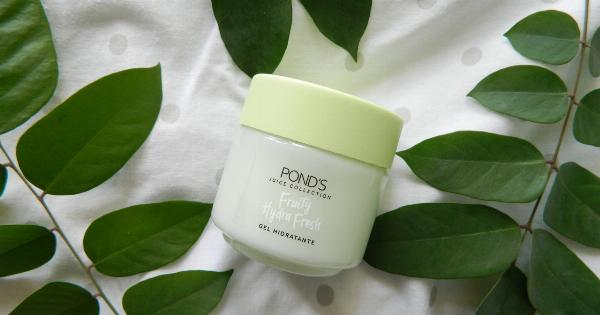Oily skin can be a challenge to manage, but with the right tips and techniques, it is possible to keep the excess shine and sebum at bay. In this article, we will discuss the three golden rules for managing oily skin effectively.
By following these rules, you can achieve a balanced and healthy complexion that is free from excessive oiliness.
1. Cleanse with Gentle but Effective Products
Cleansing is an essential step in any skincare routine, especially for those with oily skin. However, it is crucial to choose a cleanser specifically designed for oily skin that is both gentle and effective.
Look for products that are oil-free, non-comedogenic, and formulated with ingredients like salicylic acid or tea tree oil.
When cleansing, use lukewarm water to open up the pores and create a lather with the cleanser.
Gently massage it onto the skin in circular motions for about a minute, paying extra attention to areas prone to oiliness, such as the T-zone (forehead, nose, and chin). Rinse thoroughly with cool water to close the pores and pat dry with a clean towel.
2. Avoid Harsh and Drying Ingredients
While it may be tempting to use harsh products to dry out excess oil, this can actually backfire and stimulate the skin’s oil production, leading to even more oiliness.
Instead, opt for gentle products that maintain the skin’s natural moisture balance.
Avoid cleansers and toners that contain alcohol, as it can be excessively drying. Similarly, be cautious with exfoliators and scrubs, as over-exfoliation can strip away too much oil, causing the skin to compensate by producing even more oil.
Opt for gentle exfoliation once or twice a week using products with gentle exfoliating agents like alpha-hydroxy acids (AHAs) or beta-hydroxy acids (BHAs).
3. Moisturize Regularly
One of the most common misconceptions about oily skin is that it doesn’t need moisturization. However, oily skin still needs hydration and moisturization to maintain a healthy balance.
Skipping moisturizer can actually trigger the overproduction of oil as the skin tries to compensate for the lack of hydration.
Choose a lightweight, oil-free, and non-comedogenic moisturizer specifically formulated for oily skin. Look for ingredients like hyaluronic acid, niacinamide, or glycerin, which help maintain moisture without clogging the pores.
Apply it twice a day, in the morning and evening, after cleansing and toning.
4. Use Oil-Absorbing Products and Techniques
To manage oily skin throughout the day, it can be helpful to have oil-absorbing products or techniques on hand. Blotting papers or oil-absorbing sheets are great for quickly removing excess oil without disturbing makeup.
Gently press them onto the oily areas of the face to absorb the shine.
In addition to blotting papers, you can also use a mattifying primer before applying makeup. This helps to control oil production and keep your skin looking fresh and matte throughout the day.
5. Don’t Overwash or Overstimulate the Skin
While it may be tempting to constantly wash and scrub oily skin, overwashing or overstimulating the skin can actually worsen the issue. Excessive cleansing can strip away too much oil, leading to dryness and irritation.
This, in turn, can trigger the skin to produce more oil to compensate.
Stick to cleansing your face twice a day, in the morning and evening, and avoid scrubbing vigorously. Be gentle when cleansing and pat your skin dry instead of rubbing it harshly with a towel.
Overstimulating the skin through harsh treatments or frequent touch-ups can also cause the skin to produce more oil. Remember, moderation is key.
6. Incorporate Clay Masks into Your Routine
Clay masks are a fantastic addition to an oily skin care routine. They work by drawing out impurities, excess oil, and minimizing the appearance of pores.
Look for clay masks that contain ingredients like bentonite clay, kaolin clay, or French green clay.
Apply a thin layer of the mask to your cleansed face and allow it to dry for about 10-15 minutes. Rinse off with lukewarm water, and pat your skin dry.
Use clay masks once or twice a week to help control oil production and keep your skin looking fresh and clear.
7. Watch Your Diet and Hydration
What you put into your body can also affect the condition of your skin. Maintaining a healthy diet and staying hydrated plays a vital role in managing oily skin.
Avoid consuming excessive greasy or fried foods, as these can contribute to oiliness and breakouts.
Incorporate more fruits, vegetables, and whole grains into your diet, as these contain essential nutrients that promote healthy skin. Additionally, drink plenty of water throughout the day to keep your skin hydrated from within.
8. Seek Professional Help When Needed
If you have tried various methods and products but still struggle with excessive oiliness, it may be time to seek professional help.
Dermatologists can provide personalized advice and recommend prescription-strength products or treatments that target oily skin.
They may suggest topical medications containing retinoids or even in-office procedures like chemical peels or laser treatments. Remember, a dermatologist’s guidance can make a significant difference in managing your oily skin effectively.
9. Be Mindful of Makeup Choices
When it comes to makeup, certain products can exacerbate oiliness and clog the pores. Opt for oil-free, non-comedogenic, and lightweight formulas that won’t clog your pores or cause breakouts.
Look for products labeled “matte” or “long-lasting” as they can help control excess shine throughout the day.
Additionally, avoid applying heavy layers of foundation or concealer, as this can trap oil and lead to a cakey appearance.
Instead, use a lightweight, oil-free tinted moisturizer or a mineral powder foundation to achieve a more natural and breathable finish.
10. Develop a Consistent Skincare Routine
Consistency is key when managing oily skin. Establishing a regular skincare routine and sticking to it can help control oil production and maintain a balanced complexion.
Cleanse, tone, moisturize, and protect your skin twice a day, in the morning and evening, to keep it healthy and free from excessive oiliness.
Remember to be patient with your skincare routine as it may take some time to notice visible improvements. Each individual’s skin is unique, so experiment with different products and techniques to find what works best for you.


























